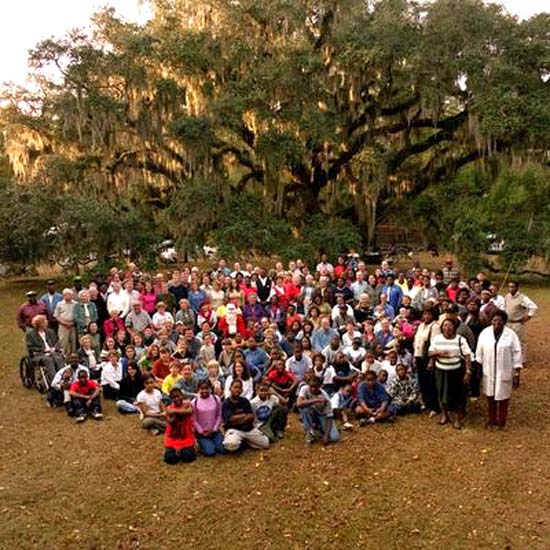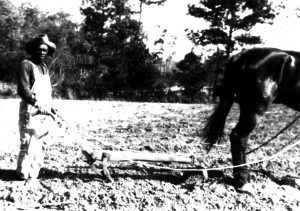A screening of Shared History for general audiences can spark discussion around the following themes that are relevant to the film and ones that most viewers will be comfortable addressing. The film is one hour long, and we recommend scheduling at least an hour for discussion after the screening.
THEMES
Family
Class
Tradition
Sense of Place
Identity
DISCUSSION QUESTIONS
Listed below are both general and scene-specific questions that are based on particular situations or characters in the film. These questions are appropriate for extended or more indepth and focused discussion within a workshop or retreat setting. Note that scene-specific questions begin with numbers that relate to the time-based location of scenes in the DVD; this will make it easier to replay a scene if needed.
For those who want to explore the film even further, click on Scene-by-Scene Synopsis.

GENERAL QUESTIONS
- At the beginning of the film, the filmmaker asks a question:After all this time I wondered if we [the black and white families at Woodlands] could begin to confront the realities of our shared history. Do you think the families were able to do this?
- What does the filmmaker mean by using the title Shared History? Can you think of other titles that would work with this material?
- What was the filmmaker’s approach to or point of view about the film’s subject? The filmmaker is white. How might this film have been different if it had been made by an African American?
- What parts of the film seem to linger in your mind or impacted you the most? What scenes felt like turning points? For you? For a particular character?
- Are there people you “met” in the film whose cultural background and/or economic and educational status are unfamiliar to you? Which characters? Did you learn anything from them?
- Do you have unanswered questions after watching the film? What else would you like to know about the story the filmmaker tells? What would a sequel to this film look like?
- At the end of the film, the filmmaker asks another question:All is never said. Much is still unspoken and unknowable. The question that remains is,“Can we accept the responsibility for this past and be stronger for it?Do you believe that an “acceptance of the past” can make someone stronger? Why or why not?

SCENE-BASED QUESTIONS
06:05
Charles Orr remarks that his immediate family seemed not to know that his ancestor, Isaac Nimmons, had been a slave at Woodlands. Why do you think his family did not know, or did not seem to know, this important piece of its family history?
15:40
How is it that Felicia Furman would not have known that slaves were bought and sold as part of the economic system at Woodlands?
18:11
Margaret Kearse, a descendant of Jim Rumph, one of the enslaved people at Woodlands, refers to her ancestor as a worker, not as a slave. What do you think she means by this?
19:54
What do you think Carl Buck meant by the term “decent relationship” when he refers to the connection between his ancestors and the enslaved people of Woodlands?
23:10
What do you think Charles Orr meant when he tells Mary Simms Furman that his parents didn’t bring him South as a child because they didn’t want him to experience “unfortunate circumstances”? Why do you think he uses this particular wording? Margaret Kearse states that her father told her and her brothers, after they yelled at whites driving by, “They [whites] can kill you, and nothing would be done about it.” Discuss what you think the impact of this statement had on her.
25:04
In the discussion about the burning of Woodlands, why do you think William Gilmore Simms, the slave master, would want to believe that his beloved slave, Isaac Nimmons, could not have burned Woodlands—even if he knew he had?
27:55
James Pressly seems to be struggling with the issue of whether or not he must take personal responsibility for slavery. Rhonda Kearse responds to his query. Describe the dilemma raised in this scene for each of the participants.
30:30
Mary Simms Furman says that, historically, she did not have a social relationship with the black servants working for her family. What does she seem to convey by this comment? She continues by characterizing the relationship that did exist as “an interdependency” and then seems to negate the “inter” with the further comment, “They needed us because we went so far back…….” What does she mean by these statements?
33:09
What is your reaction to Simms Oliphant’s statement about being brought up to treat people at Woodlands with “real respect and reasonable behavior”?
37:12
Reflect on the statements that Aquarius makes about his ancestor. “Even though he [George Rowe, his ancestor] was a slave, he still had some good qualities.” and “If I don’t be successful, and I take a bad route, and I go to jail or something, it’s just like being a slave; I’m not really owning myself.”
45:00
Dorothy Manigault indicates by her words, behavior, and body language that the issue of the Rumph family’s purchase of land formerly owned by the Simms family is very important to her. Why do you think this is of such importance to her? Does it seem important to Carl Buck that the land in question had been given to the Rumphs by the Simms and not sold? Why were there two conflicting versions of the same story maintained over many generations?


















